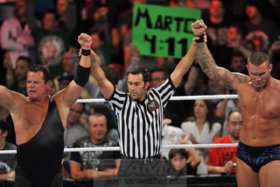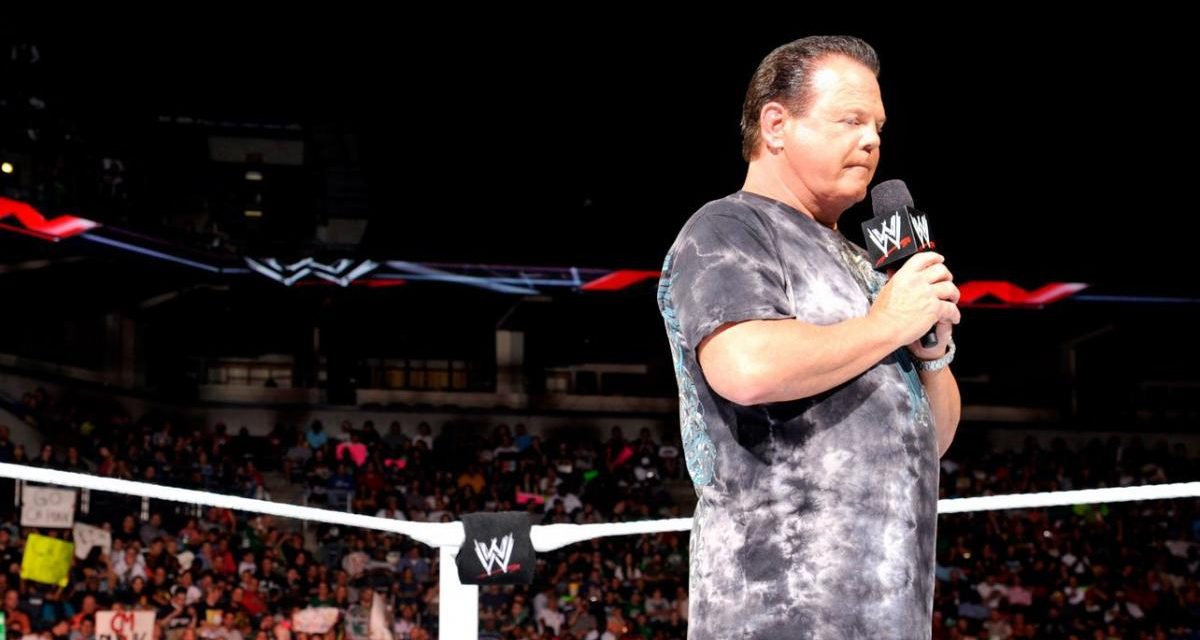A curious thing happened in the moments, and even hours, after Jerry Lawler collapsed off-camera while commentating alongside Michael Cole during Raw in Montreal on September 10, 2012; well, it would be curious anywhere but in the world of professional wrestling.
The social media platforms that the WWE is so expertly utilizing for promotion became a floor for debate on pro wrestling’s most longstanding point of contention: “Was that real?”
Posts expressing immediate concern and well-wishes popped up right alongside allegations of this being just another work, another sleight-of-hand, and these two positions then hit head-on and broke down into an “is not/is too” debate with all the obligatory personal attacks that come with faceless conversations such as those created on-line.
Such personal stabs aside, both sides of the debate have reason to get all worked up. On the one hand, there is moralistic indignation on the part of those who are immediately concerned about not just Lawler’s health, but his life, against anyone treating the matter trivially. In that view, there’s no room for anything but the most serious concern. On the other hand, however, are those who might quote Roger Daltrey of The Who and say they won’t get fooled again; this is a business in which characters fall off buildings, are buried alive, and yes, even suffer heart attacks, only to show up again after some time has passed to resume business as usual.

Jerry Lawler and Randy Orton won their match last night in Montreal. Photo by Minas Panagiotakis, www.photography514.com
In that light, pro wrestling characters are like those found in comic books or science-fiction stories. “Dead” in Star Trek, for example, often means the character is going to return in another guise or through a coincidental slip in the fabric of the universe. The difference is, as it always is in pro wrestling, that not one person will ever confuse the actor Leonard Nimoy with the character of Mr. Spock. Jerry Lawler, on the other hand, is Jerry Lawler; his on-screen persona and backstage identity purposefully fused in the eyes of the fans.
Some fans pointed to the reactions of others in the broadcast as evidence of the reality of the situation. During the Primetime Players versus Kane and Daniel Bryan match, referee Charles Robinson and Daniel Bryan were both most noticeably watching the events unfold around the announcer’s table while going through the motions of the match. Again though, the jaded wrestling fan remembers a similar reaction by Owen Hart and Jim Cornette during a match when Shawn Michaels collapsed in the middle of the ring in 1995, sparking the exact same “is not/is too” exchange in trying to answer the question: “was that real?”
Then, as now, it isn’t just the fans that check themselves before diving headlong into supporting the story as real or decrying it as theatre: news outlets and even the stations that broadcast the wrestling itself seem uncertain of how to go forward in light of an unfolding tragedy.

Owen Hart waving the flag. SlamWrestling.net file photo.
The aforementioned Owen Hart will likely be forever linked to any decision on the WWE’s part to continue with a show during any circumstance. His death in the ring after a failed stunt in 1999 became a figurehead for the WWE’s decree that “the show must go on”, while also serving as a focal point on the other side of that argument for those who felt the event should have been stopped after Hart’s death, instead of having the rest of the card played out as planned.
There’s almost no sense in arguing that point as it relates to Lawler collapsing and whether Raw should have been stopped. The WWE drew its own line in the sand and it’s hard to foresee a show stopping for anything when the 1999 event carried on in the face of death. That Lawler was ushered backstage for his CPR treatment, as tweeted by Cole, is indicative of the fact that this emergency was not to be handled in a public setting. This does not denote a lack of compassion on anyone’s part within the WWE, but simply demonstrates the way things work: the machine rolls on. This would be understood, if not agreed to, by everyone involved in Raw, including Lawler.
The line between reality and fiction has been so expertly blurred that even if the entire broadcast were to shift focus, cancel the matches and put on some kind of replay, there would be questions about whether it was a stroke of creative genius on the WWE’s part to make it all seem as real as possible. In this way the wrestling business finds itself in a no-win situation, but it’s a situation they created for themselves.
In that light, when the WWE asks for the prayers of its fans to be sent to Lawler, they are bound to get some suspicious hesitation back from those guarding their emotions; not because if they knew the truth that they would harbour ill-will towards one of their heroes, but because the truth in pro wrestling is so often hard to come by.
RELATED LINK

